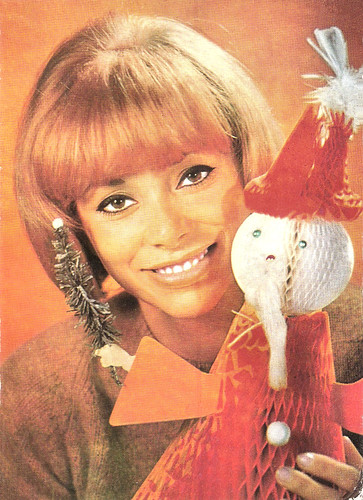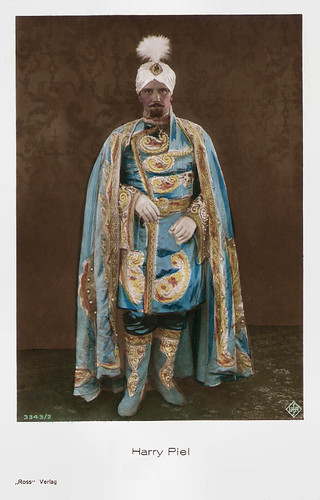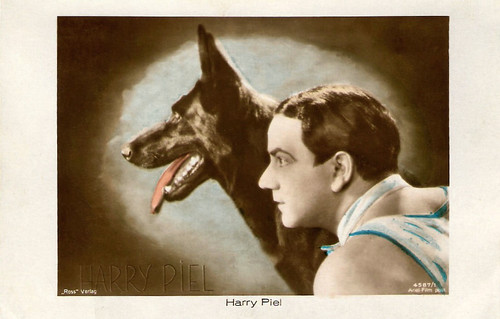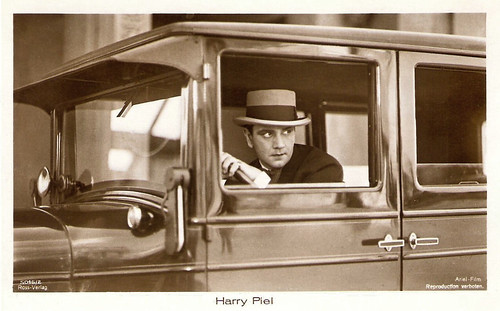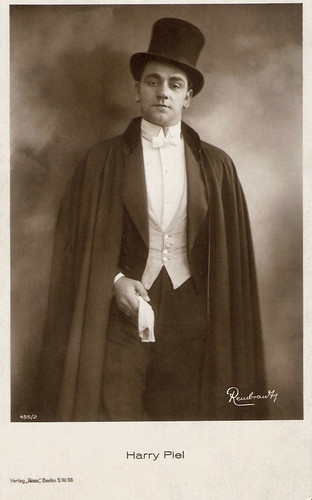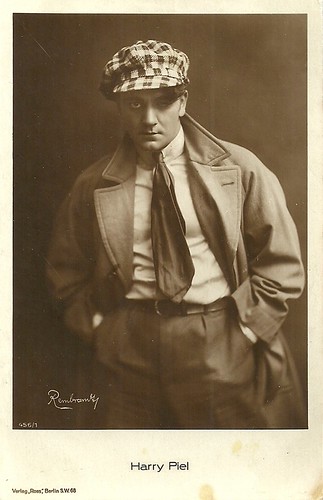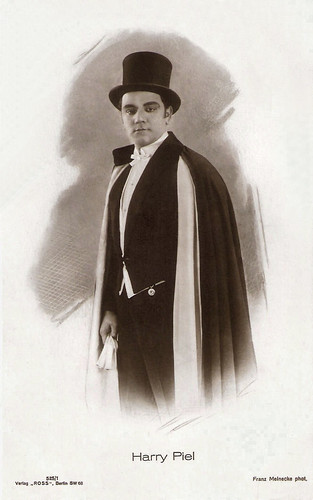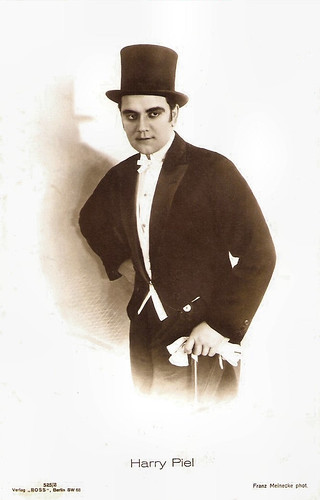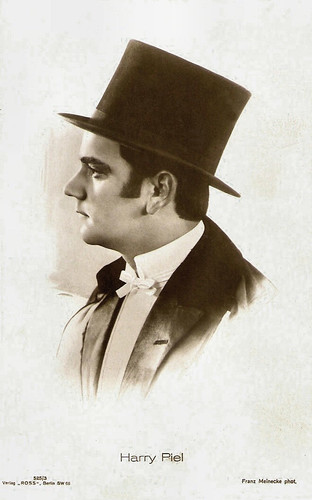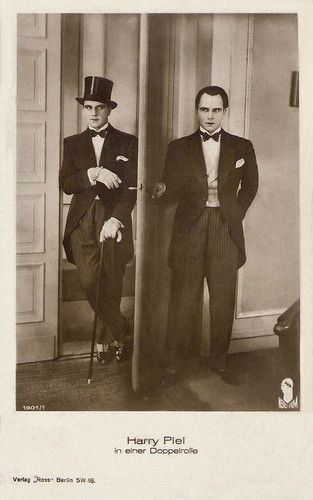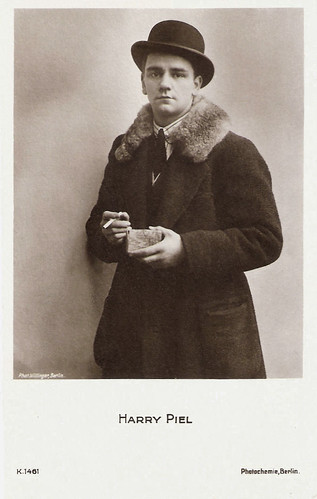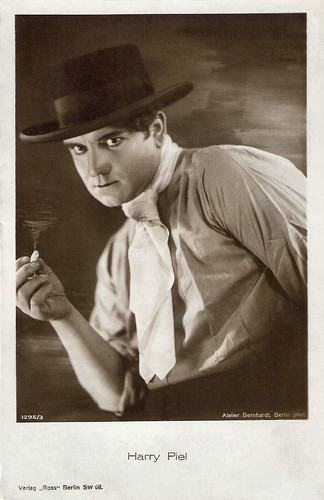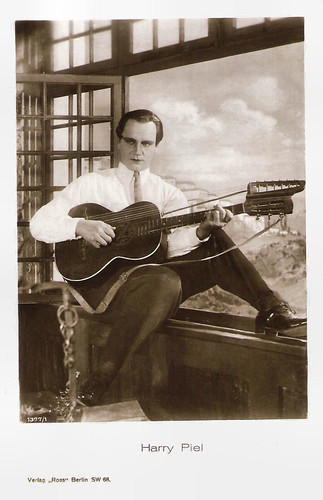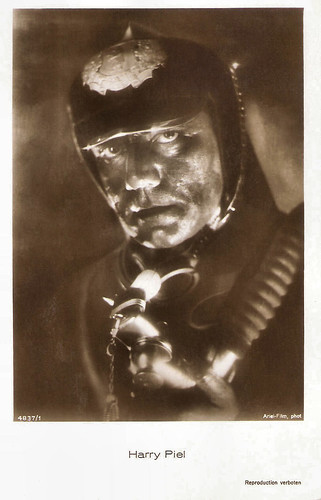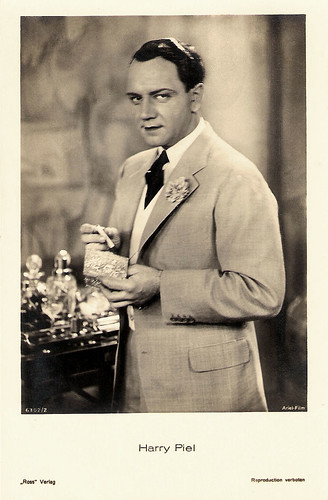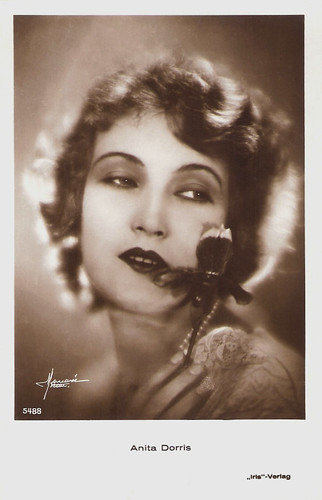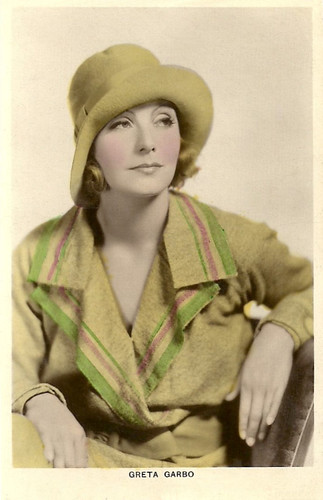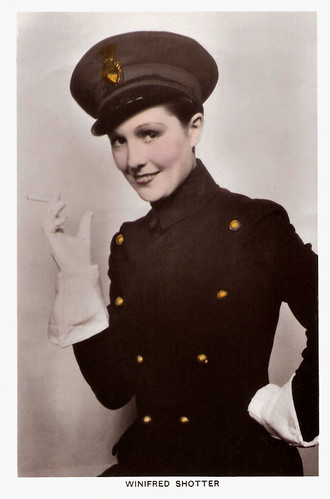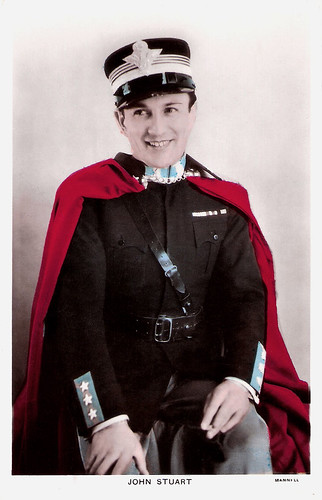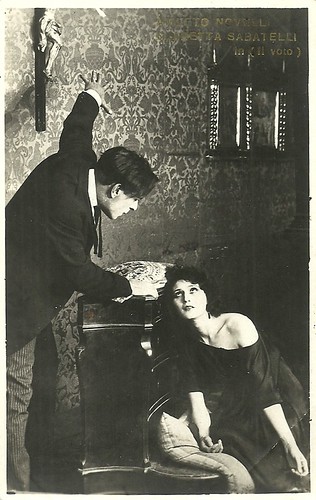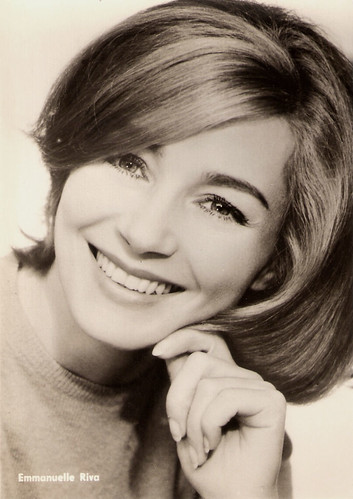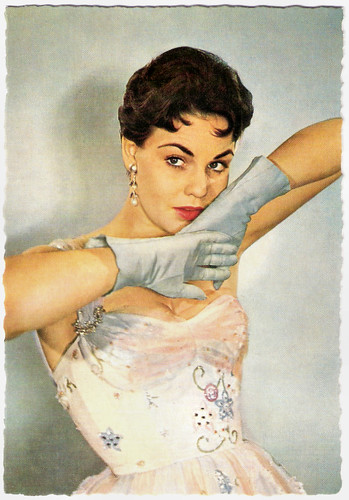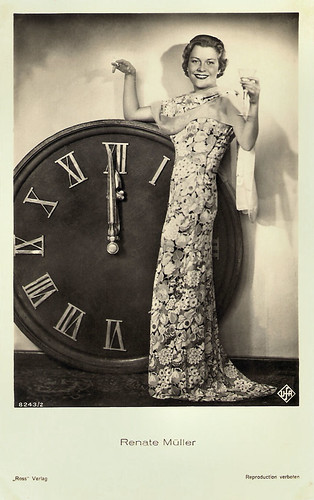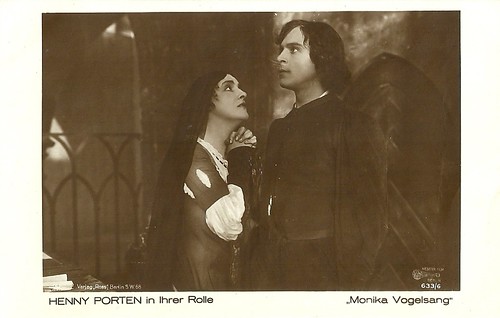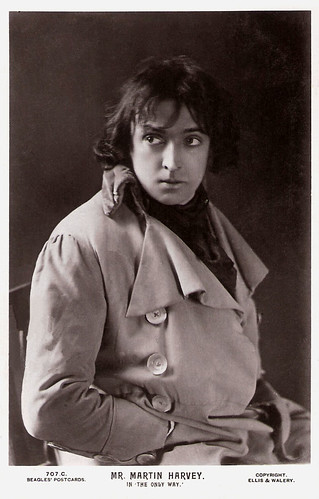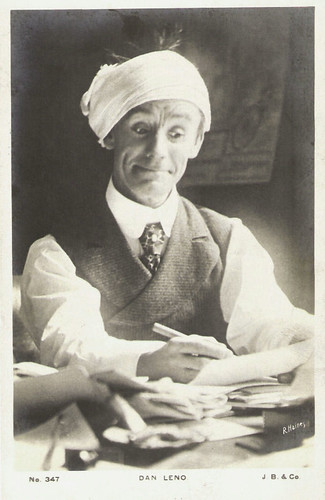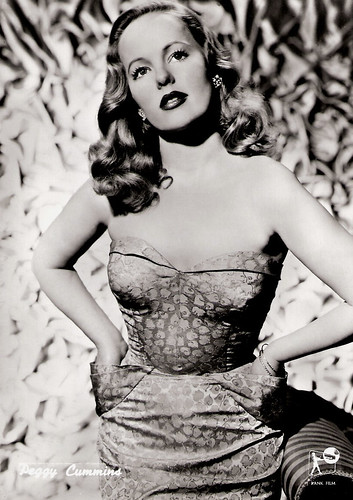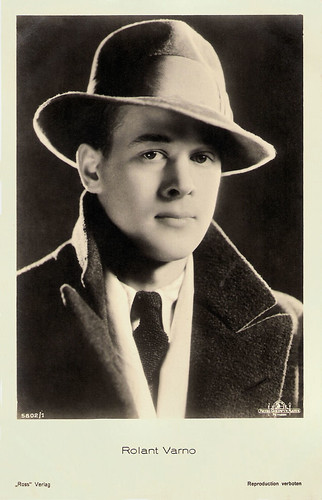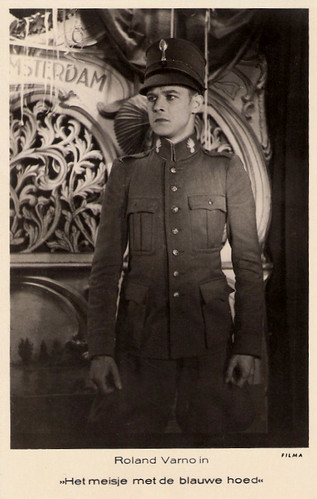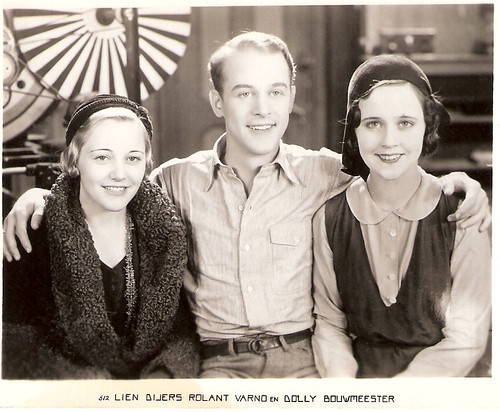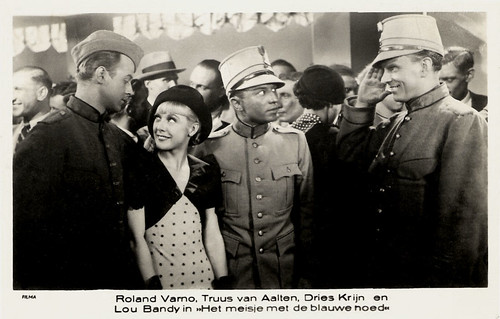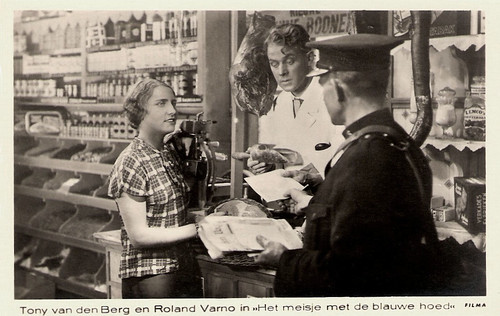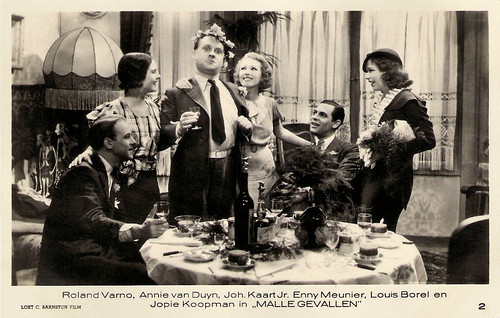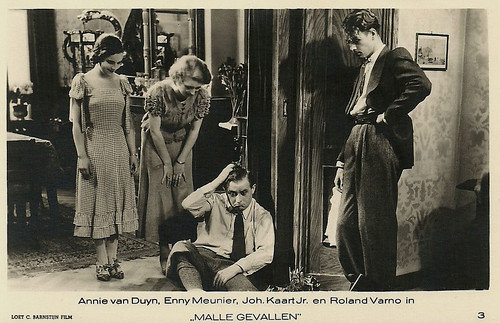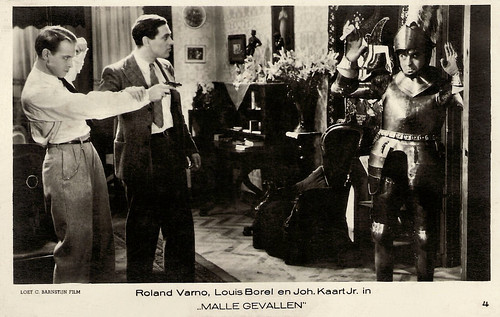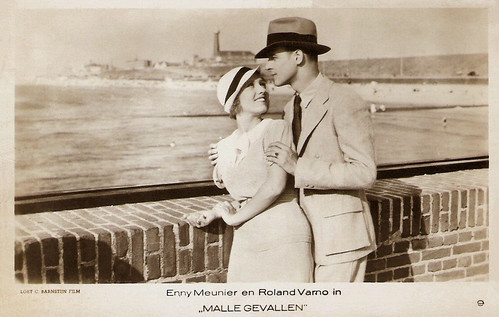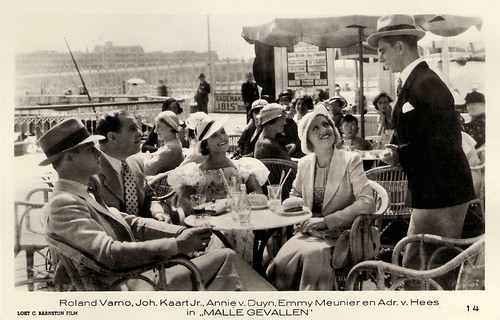Austrian stage, film and television actress Doris Kirchner (1930) was a popular comedienne of the German cinema of the 1950s. She both appeared in leading and supporting roles.
![Doris Kirchner and Michael Cramer in Der Jäger von Roteck (1956)]()
West-German postcard by Kolibri-Verlag, no. 1957. Photo: Panorama / Wolf. Publicity still for Der Jäger von Roteck/The Huntsman of Roteck (Hermann Kugelstadt, 1956) with Michael Cramer.
![Doris Kirchner]()
West-German postcard by Ufa, Berlin-Tempelhof, no. FK 3715. Photo: Rhombus / Herzog-Film / Dittner. Publicity still for Das Glück liegt auf der Strasse/Happiness is on the street (Franz Antel, 1957).
Doris Kirchner was born in 1930 in Graz, Austria.
At the end of the 1940s, she attended the Max Reinhardt Schule in Wien (Vienna). Later she performed at the renowned Burgtheater in Vienna.
In 1949 she made her film debut in the Austrian Heimatfilm Das Siegel Gottes/The Seal of the Lord (Alfred Stöger, 1949). It was one of the first films in the postwar era to use the seal of confession as a substantive issue.
During the 1950s she appeared in such films as comedy Seitensprünge im Schnee/Escapades in the Snow (Siegfried Breuer, 1950) with Heinz Engelmann, Abenteuer im Schloss/Adventures in the Castle (Rudolf Steinboeck, 1952) and Wo die Lerche singt/Where the Lark Sings (Hans Wolff, 1956) with Renate Holm, based on the operetta by the Hungarian composer Franz Lehár.
She also played supporting parts in such films as the cross-dressing comedy Fanfaren der Ehe/Fanfare of Marriage (Hans Grimm, 1953) starring Dieter Borsche and Georg Thomalla, and Ich und Du/I and You (Alfred Weidenmann, 1953) starring Hardy Krüger and Liselotte Pulver.
![Doris Kirchner and Peter Pasetti in Verliebte Leute (1954)]()
West-German postcard by Kolibri-Verlag, no. 1369. Photo: Neusser / Constantin / Appelt. Publicity still for Verliebte Leute/Loving Couples (Franz Antel, 1954) with Peter Pasetti.
![Doris Kirchner]()
German postcard by Kolibri-Verlag, no. 1042. Photo: Algefa / Herzog-Film / Grimm. Publicity still for Der treue Husar/The Faithfull Hussar (Rudolf Schündler, 1954).
![Doris Kirchner and Adrian Hoven in Lügen haben hübsche Beine (1956)]()
East-German postcard by VEB Progress Film-Vertrieb, Berlin, no. 1500, 1961. Photo: publicity still for Lügen haben hübsche Beine/Lies have pretty legs (Erik Ode, 1956) with Adrian Hoven.
Doris Kirchner was married to the directors Helmuth Ashley and Franz Josef Gottlieb. With her second husband, she made several light entertainment films during the 1960s and 1970s.
Their first film together was the German-Spanish crime film Das Geheimnis der schwarzen Witwe/The Secret of the Black Widow (Franz Josef Gottlieb, 1963) starring O. W. Fischer and Klaus Kinski. It was based on one of the crime novels by Louis Weinert-Wilton.
After the success of their Edgar Wallace series, Constantin film tried to copy this success with a series of four Louis Weinert-Wilton adaptations. Although the film was advertised as 'The Creepiest, Crawliest and Deadliest Film Ever Produced!'most critics found the film quite dull.
Gottlieb and Kirchner followed this with the saccharine musical comedy Wenn du bei mir bist/When You're With Me (Franz Josef Gottlieb, 1970) starring Roy Black and Lex Barker. Filming took place in international settings including several airports. Location filming was done in Germany as well as Bangkok and Colombo.
Kirchner also appeared in three farces with Rudi Carrell, Wenn die tollen Tanten kommen/When the Mad Aunts Arrive (Franz Josef Gottlieb, 1970) also with Ilja Richter and Schlager singer Chris Roberts, Tante Trude aus Buxtehude/Aunt Trude from Buxtehude (Franz Josef Gottlieb, 1971), and Rudi, benimm dich!/Rudi, Behave! (Franz Josef Gottlieb, 1971).
These Rudi Carrell comedies were among the several German films in the wake of Some Like it Hot (Billy Wilder, 1959) that used cross-dressing as a comic theme and were inspired by the cross-dressing plot of Charley's Aunt. In turn, Some Like it Hot was again based on the German comedy Fanfaren der Liebe/Fanfares of Love (Kurt Hoffmann, 1951). While Kirchner had 20 years earlier appeared in the sequel of this film, Fanfaren der Ehe/Fanfare of Marriage (Hans Grimm, 1953).
In 1988, Doris Kirchner became the manager of Schauspielschule Bühnenstudio Hamburg. Her last screen role was in the TV series Wolken über Kaprun/Clouds over Kaprun (Franz Josef Gottlieb, 1993).
At the age of 73, Doris Kirchner suffered a stroke that caused dementia. Today she lives in an old people's home near Hamburg. In 2011, film makers Kirsten Poggendorff and Michael Wolfram made a film about her there, Müllerstochter, Königin ... - Porträt der Schauspielerin Doris Kirchner/Miller's daughter, Queen ... - Portrait of the actress Doris Kirchner (2011).
![Doris Kirchner]()
German postcard by Kolibri-Verlag, Minden-Westf. Photo: Melodie / Sandrew / Herzog-Film / A. Grimm. Publicity still for Sommarflickan/Swedish Girl (Håkan Bergström, Thomas Engel, 1955).
![Doris Kirchner]()
West-German postcard by Ufa, Berlin-Tempelhof, no. FK 3687. Photo: Bavaria Film / Schorcht Film. Publicity still for Vater, unser bestes Stück/Father, our best piece (Günther Lüders, 1957).
Sources: Christina Bylow (Berliner Zeitung - German), Wikipedia and IMDb.

West-German postcard by Kolibri-Verlag, no. 1957. Photo: Panorama / Wolf. Publicity still for Der Jäger von Roteck/The Huntsman of Roteck (Hermann Kugelstadt, 1956) with Michael Cramer.

West-German postcard by Ufa, Berlin-Tempelhof, no. FK 3715. Photo: Rhombus / Herzog-Film / Dittner. Publicity still for Das Glück liegt auf der Strasse/Happiness is on the street (Franz Antel, 1957).
Cross-dressing comedy
Doris Kirchner was born in 1930 in Graz, Austria.
At the end of the 1940s, she attended the Max Reinhardt Schule in Wien (Vienna). Later she performed at the renowned Burgtheater in Vienna.
In 1949 she made her film debut in the Austrian Heimatfilm Das Siegel Gottes/The Seal of the Lord (Alfred Stöger, 1949). It was one of the first films in the postwar era to use the seal of confession as a substantive issue.
During the 1950s she appeared in such films as comedy Seitensprünge im Schnee/Escapades in the Snow (Siegfried Breuer, 1950) with Heinz Engelmann, Abenteuer im Schloss/Adventures in the Castle (Rudolf Steinboeck, 1952) and Wo die Lerche singt/Where the Lark Sings (Hans Wolff, 1956) with Renate Holm, based on the operetta by the Hungarian composer Franz Lehár.
She also played supporting parts in such films as the cross-dressing comedy Fanfaren der Ehe/Fanfare of Marriage (Hans Grimm, 1953) starring Dieter Borsche and Georg Thomalla, and Ich und Du/I and You (Alfred Weidenmann, 1953) starring Hardy Krüger and Liselotte Pulver.

West-German postcard by Kolibri-Verlag, no. 1369. Photo: Neusser / Constantin / Appelt. Publicity still for Verliebte Leute/Loving Couples (Franz Antel, 1954) with Peter Pasetti.

German postcard by Kolibri-Verlag, no. 1042. Photo: Algefa / Herzog-Film / Grimm. Publicity still for Der treue Husar/The Faithfull Hussar (Rudolf Schündler, 1954).

East-German postcard by VEB Progress Film-Vertrieb, Berlin, no. 1500, 1961. Photo: publicity still for Lügen haben hübsche Beine/Lies have pretty legs (Erik Ode, 1956) with Adrian Hoven.
The Creepiest, Crawliest and Deadliest Film Ever Produced!
Doris Kirchner was married to the directors Helmuth Ashley and Franz Josef Gottlieb. With her second husband, she made several light entertainment films during the 1960s and 1970s.
Their first film together was the German-Spanish crime film Das Geheimnis der schwarzen Witwe/The Secret of the Black Widow (Franz Josef Gottlieb, 1963) starring O. W. Fischer and Klaus Kinski. It was based on one of the crime novels by Louis Weinert-Wilton.
After the success of their Edgar Wallace series, Constantin film tried to copy this success with a series of four Louis Weinert-Wilton adaptations. Although the film was advertised as 'The Creepiest, Crawliest and Deadliest Film Ever Produced!'most critics found the film quite dull.
Gottlieb and Kirchner followed this with the saccharine musical comedy Wenn du bei mir bist/When You're With Me (Franz Josef Gottlieb, 1970) starring Roy Black and Lex Barker. Filming took place in international settings including several airports. Location filming was done in Germany as well as Bangkok and Colombo.
Kirchner also appeared in three farces with Rudi Carrell, Wenn die tollen Tanten kommen/When the Mad Aunts Arrive (Franz Josef Gottlieb, 1970) also with Ilja Richter and Schlager singer Chris Roberts, Tante Trude aus Buxtehude/Aunt Trude from Buxtehude (Franz Josef Gottlieb, 1971), and Rudi, benimm dich!/Rudi, Behave! (Franz Josef Gottlieb, 1971).
These Rudi Carrell comedies were among the several German films in the wake of Some Like it Hot (Billy Wilder, 1959) that used cross-dressing as a comic theme and were inspired by the cross-dressing plot of Charley's Aunt. In turn, Some Like it Hot was again based on the German comedy Fanfaren der Liebe/Fanfares of Love (Kurt Hoffmann, 1951). While Kirchner had 20 years earlier appeared in the sequel of this film, Fanfaren der Ehe/Fanfare of Marriage (Hans Grimm, 1953).
In 1988, Doris Kirchner became the manager of Schauspielschule Bühnenstudio Hamburg. Her last screen role was in the TV series Wolken über Kaprun/Clouds over Kaprun (Franz Josef Gottlieb, 1993).
At the age of 73, Doris Kirchner suffered a stroke that caused dementia. Today she lives in an old people's home near Hamburg. In 2011, film makers Kirsten Poggendorff and Michael Wolfram made a film about her there, Müllerstochter, Königin ... - Porträt der Schauspielerin Doris Kirchner/Miller's daughter, Queen ... - Portrait of the actress Doris Kirchner (2011).

German postcard by Kolibri-Verlag, Minden-Westf. Photo: Melodie / Sandrew / Herzog-Film / A. Grimm. Publicity still for Sommarflickan/Swedish Girl (Håkan Bergström, Thomas Engel, 1955).

West-German postcard by Ufa, Berlin-Tempelhof, no. FK 3687. Photo: Bavaria Film / Schorcht Film. Publicity still for Vater, unser bestes Stück/Father, our best piece (Günther Lüders, 1957).
Sources: Christina Bylow (Berliner Zeitung - German), Wikipedia and IMDb.






